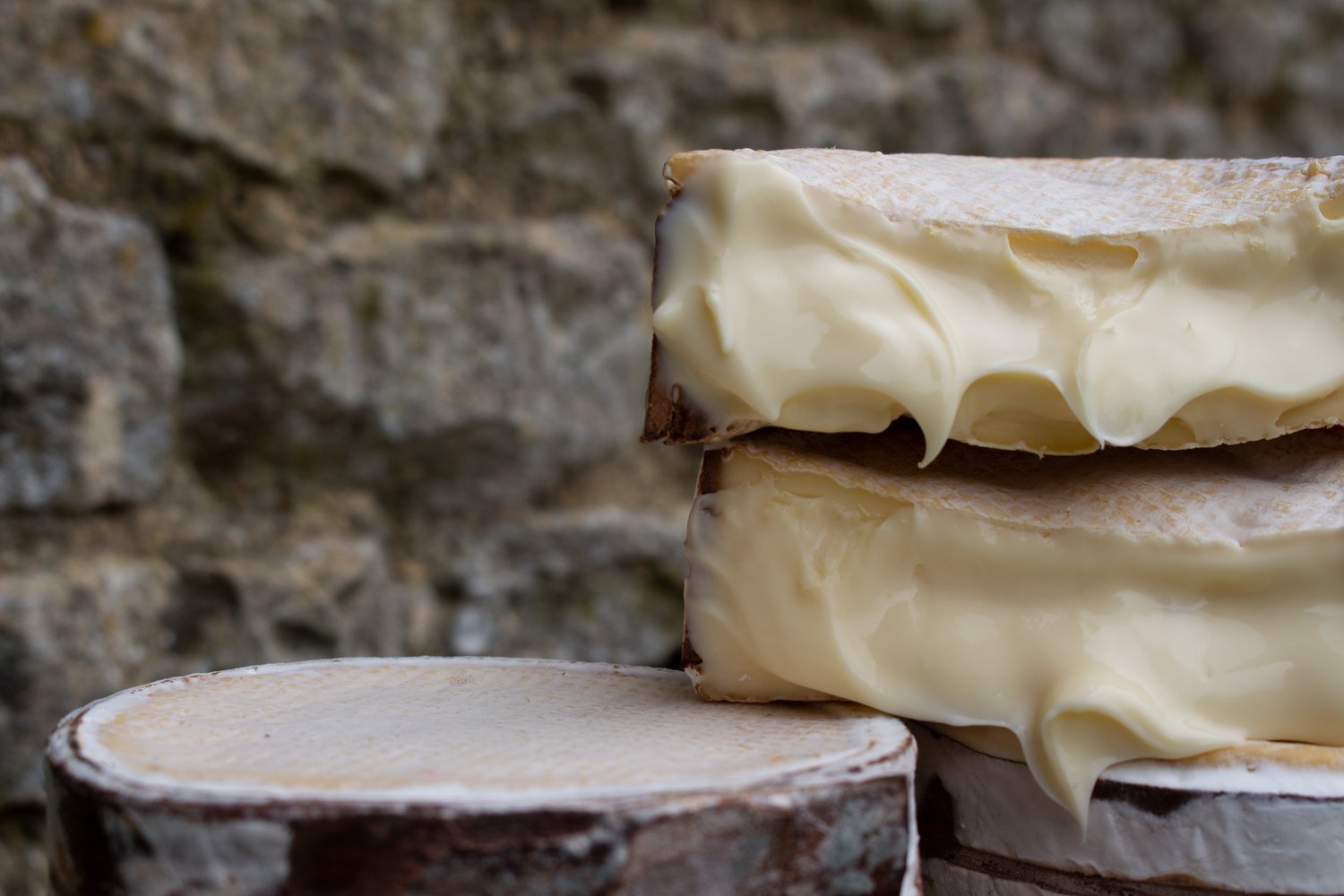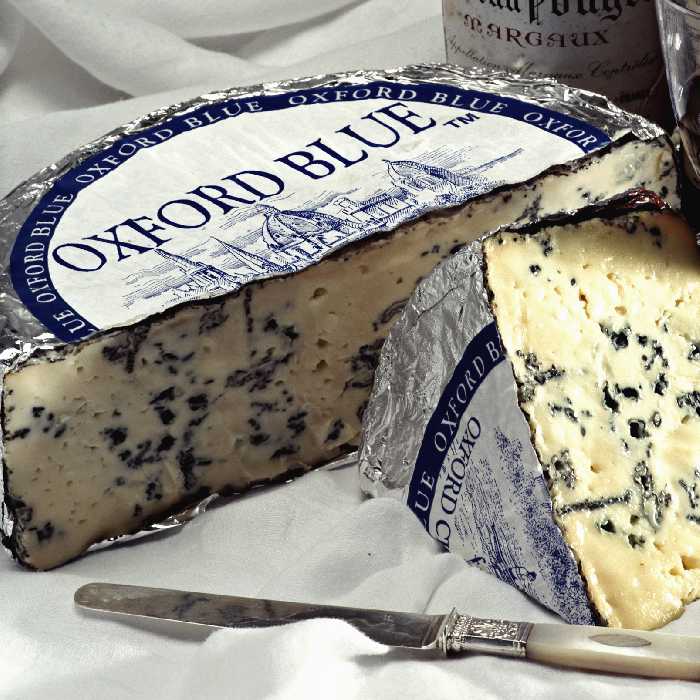December 15, 2023
Destination: Cotswolds
Share
In this article
Best Cotswolds Cheese
A visit to the Cotswolds wouldn’t be complete without sampling some local produce and because the region is predominately agricultural, there is a good variety of local food and drink to try.
Although the Cotswolds isn’t amongst the most well-known cheese regions of England, the area certainly packs a pongy punch.
Butter knives at the ready, warm up your fondue, it’s time for a look at Cotswold cheese.
What is Cotswold cheese?
Cotswold cheese is a hard, cow’s milk cheese based on Double Gloucester, but with the added addition of onions and chives.
Confusingly the term ‘Cotswold’ when applied to cheese, is trademarked by the Long Clawson dairy in Leicestershire, some 70 miles further north. So if you do sample some Cotswold cheese it’s more than likely that it doesn’t originate from the Cotswolds.
That said, Cotswold cheese would make a fine accompaniment to some of the UK’s best wines. During your visit to the Cotswolds we’d recommend sampling it with a glass of Bolney Lychgate Bacchus, what some have called the ‘Sauvignon Blanc of the UK’.
Is Double Gloucester a Cotswold cheese?
Double Gloucester is a cheese made in several places in the Cotswolds. Although if we’re being pedantic, the city of Gloucester and much of the cheese’s production is outside of the confines of the Cotswolds.
The term ‘Gloucester Cheese’ has been protected under a Designation of Origin (PDO) since 1994 in the EU and since 2020, post-Brexit. However, this PDO only refers to Single Gloucester and not the more widely produced Double Gloucester.
To adhere to this system of legislation, true Single Gloucester cheese, should be made from the milk of a Gloucester cow, an animal which is now a rare sight in the UK.
Why is Double Gloucester cheese orange?
Double Gloucester cheese is orange thanks to the use of annatto, a natural food colouring made from the nut of the Achiote tree. You won’t find any Achiote’s growing in the Cotswolds mind, they’re native to central America.
What’s the difference between single and double Gloucester Cheese?
Both single and double Gloucester cheese posess a natural rind and a firm texture, though Single Gloucester is relatively crumbly, lighter in texture, and has less fat content. On the other hand, Double Gloucester ages for longer, resulting in a more robust and savoury flavour. It is also slightly firmer in texture.
Single Gloucester cheese was traditionally pressed into large, flat shapes. Being flat made the cheese easier to store in the lofts of farmhouses. When visiting the area, you can still see evidence of the lifts used to winch the cheese to the top of farm buildings and vents in those buildings which enabled air flow during storage.
What types of cheese are made in the Cotswolds?
Cow milk cheese makes up most if not all, large-scale cheese production in the Cotswolds. A notable exception is Cerney Cheese – artisan goat cheese makers. Each of their three cheeses is handmade in the Cotswolds using unpasteurised goat’s milk.
Their signature cheese is coated in an oak ash and salt mixture which gives the cheese a distinguishable taste (fresh, lemon hints) but also a unique appearance too.
Cerney sells most of their cheese directly to restaurants and pubs, although you can find it in a select number of retailers across the Cotswolds, including Gloucester Services.
The best cheese made in the Cotswolds
1. Rollright
Rollright is one of a growing number of cheeses produced by the prolific Kingstone Dairy, located near Chedworth in the heart of the Cotswolds. Their first cheese (and perhaps our favourite) is Rollright, a soft, almost spoonable cheese with delicate flavours. Named after the Rollight Stones, one of our top 20 things to do when visiting the Cotswolds, this cheese comes in an intriguing package, wrapped in spruce bark.

Rollright and other cheeses from Kingstone Diary are produced using milk sourced directly from the onsite farm. The organic milk originates from British Friesan and Shorthorn cattle.
2. Oxford Blue
Oxford Blue – a wordplay on the official colours of the city’s university and the type of cheese – is produced near Burford. If you’ve heard (or even better, tried Stilton cheese) you’ll love this. Softer and creamier than Stilton, Oxford Blue should be a mandatory selection on any Cotswold cheese board. If blue cheese takes your fancy, don’t miss Daylesford’s Bledington Blue.

3. Jonathan Crump’s Double Gloucester
If you want to taste a traditional English Double Gloucester cheese, this is it. Bright orange and buttery on the palette, it’s great on its own or as an accompaniment to a myriad of dishes. Whilst some might consider it heresy, our favourite way to eat Double Gloucester is melted on a burger or used liberally in a toasted cheese sandwich – just make sure it’s between two slices of fresh, white, farmhouse-style bread – ours has lashings of butter too – thank you!

A footnote on cheese made in or near the Cotswolds.
Former Blur (a popular Britpop band from the 1990s) frontman, Alex James, began producing both artisanal and ‘everyday’ cheese at his farm near Kingham in the early 2010’s. Such was his success that his cheese range is now produced primarily at other skilled creameries in places like Yorkshire and Wales.
Godsell’s Cheese are also worthy of a mention, although their creamery (and farm) is located just outside the Cotswolds. Godsell’s are one of a dwindling number of Single Gloucester PDO producers in Gloucestershire.
Stinking Bishop, is another famous English cheese variety produced near, but not in the Cotswolds. The cheese takes its name from its pungent aroma. The unique method of washing the cheese in Perry (pear cider) during the ageing process is the cause of the cheeses’ peculiar nose.
Where to sample the best cheese in the Cotswolds
Throughout the Cotswolds, there are many pubs, restaurants and cafes to try local cheese. From the various pubs (ideal for a traditional English Sunday roast lunch) to our favourite hotel haunts like the Lamb in Burford, you’ll be sure to find some local cheese to sample in the Cotswolds.
However, if cheese really is your thing, then you must take a visit to one of the many cheese shops in the Cotswolds. The Cotswold Cheese Company have not one but three shops in the area, all staffed by friendly cheesemongers. Find them in Stow-on-the-Wold, Moreton-in-Marsh and Burford.
Further south, in Bath, there’s The Fine Cheese Shop to visit and in the same city, a branch of Paxton & Whitfield.
Daylesford, the organic farm shop and producer is also another must-visit for cheese lovers. It’s a place we frequently ride to on our cycling tours of the Cotswolds.
Buy cheese by diving into the specially temperature-controlled cheese room, or dine in one of the various eateries on site. If there’s not a Daylesford cheese included in a starter or entrée, you’ll always find it ready and waiting on their ‘Pudding and Creamry’ menu.
That rounds off our guide to cheese from the Cotswolds. We’re off to find some crackers, it’s time for some ‘cheese gromit.’







